Caring for your Jewellery while abroad
Heading to the Mediterranean this season? While you soak up the sun, make sure your diamonds are just as radiant when...
The Gemological Institute of America, GIA certified diamonds are supposed to ensure the quality of diamonds. They are the most reliable diamond laboratory and by far the largest of several global labs.
GIA clients are the dealers who submit the diamonds for certification and grading. In our opinion, GIA favours their clients – diamond cutters and diamond dealers. Yet GIA claims to be protecting you, the customer. What you want is to know how to chose a beautiful diamond, perhaps for an engagement ring!
The top four problems where GIA are not there to protect you:
GIA grading certificate terminology use jargon like: “Clarity Grade is based on Clouds that are not shown”. That does not tell you the stone is hazy, milky or lacks brilliance and sparkle. Those GIA certified diamonds are dull. They have microscopic inclusions reducing the diamonds sparkle and transparency. Very few jewellery shop owners know that. Many offer those diamonds as a bargain because you cannot see any flaws with a jeweller’s 10x loupe. GIA have their tricks to help dealers sell all the diamonds. They have a system and they are very good at delivering it. The wholesale trade sell those dull looking diamonds at a 20% discount!
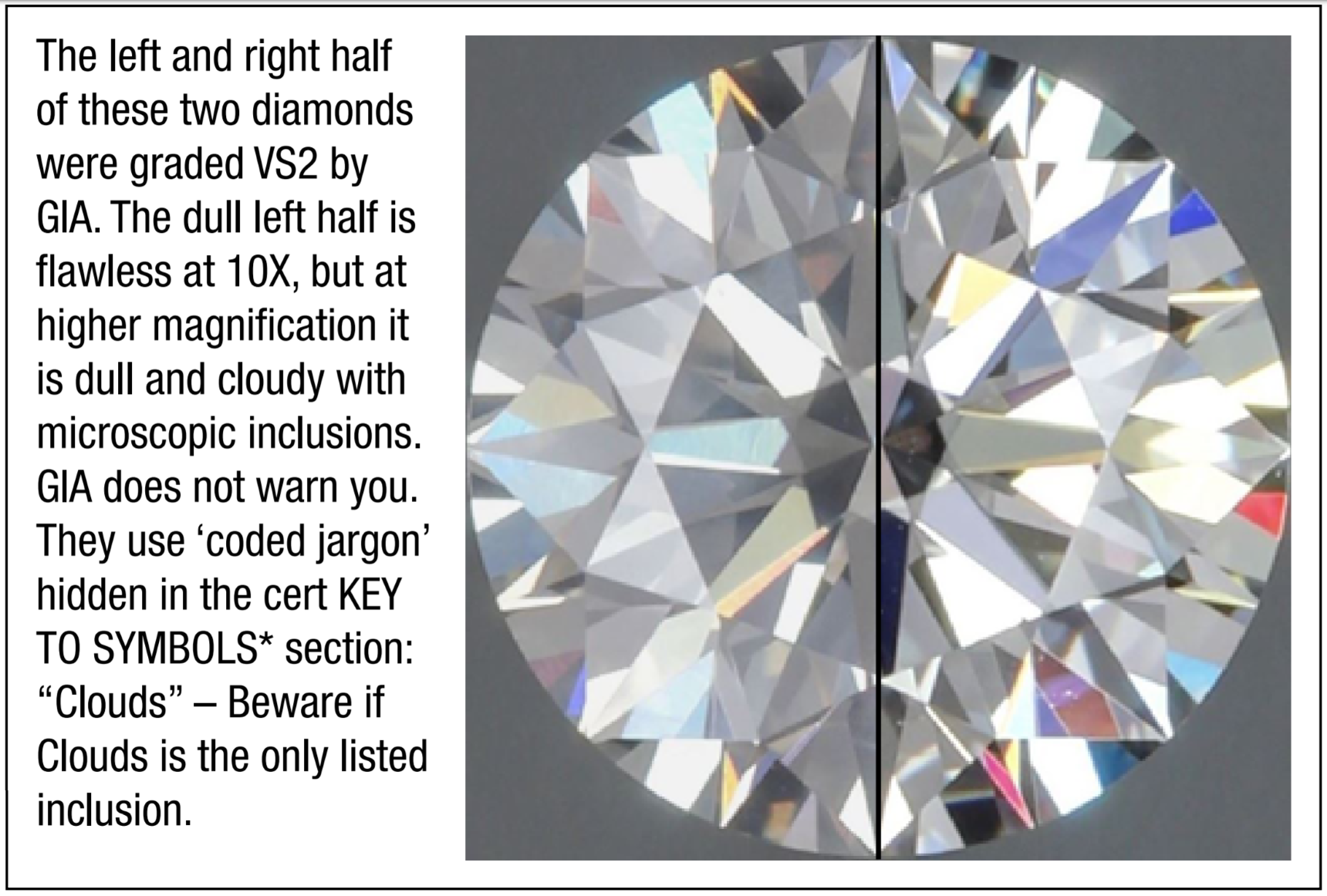
GIA Cut Quality grades are too generous to the diamond dealers; they pay for the grading! Garry Holloway rejects 90% of GIA’s top Cut Quality round diamonds. Triple Excellent or XXX cut grade diamonds. Compare a Holloway diamond to a XXX triple excellent grade diamond and you will see for yourself. GIA’s Cut Quality grades favour trade dealers and diamond cutters. All Holloway Diamonds will out-sparkle 90% of GIA XXX triple excellent grade diamonds.
The chart below shows red Ideal-Scope images in the proportions that GIA gives Triple Excellent or XXX – its top Cut Quality grade. The diamonds with proportions to the upper right all have less light return and brilliance. The pale circles are zones of light leakage out the back of the diamond. Only 10% of GIA XXX diamonds fall below the line. Diamond cutters cut 90% of diamonds too deeply.
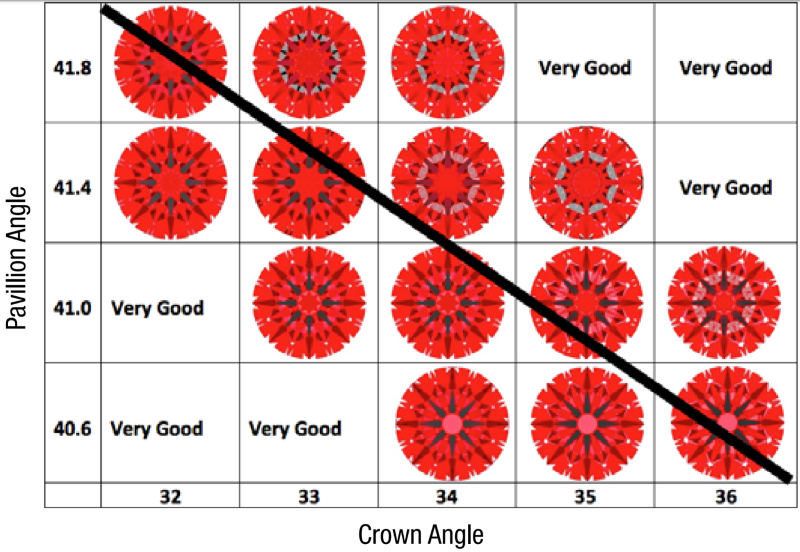
GIA triple excellent XXX proportion diamonds are mostly bad. See Ideal-Scope for details.
GIA does not grade the diamond Cut Quality f fancy shaped diamonds. All the other shapes have no Cut quality grade. No oval cut, cushion cut, emerald cut, Asscher cut, marquise and pear-shaped diamond cuts. Very few jewellers and almost no jewellery store salespeople know this. Excellent Polish and Excellent Symmetry on a GIA grading cert’s does not mean the stone is good. Garry Holloway rejects 95% of all fancy shapes. Garry invented tools to select the very best fancy shaped diamonds. The best known are the ASET scope and Ideal-Scope. The worlds best diamond cutters use their inventions to produce the sparkliest diamonds.
In the two grading reports below in red, there is cut grade and in blue there are only two proportions. There are 10 proportions listed on the round diamond cert beneath. And there is a Cut grade given.
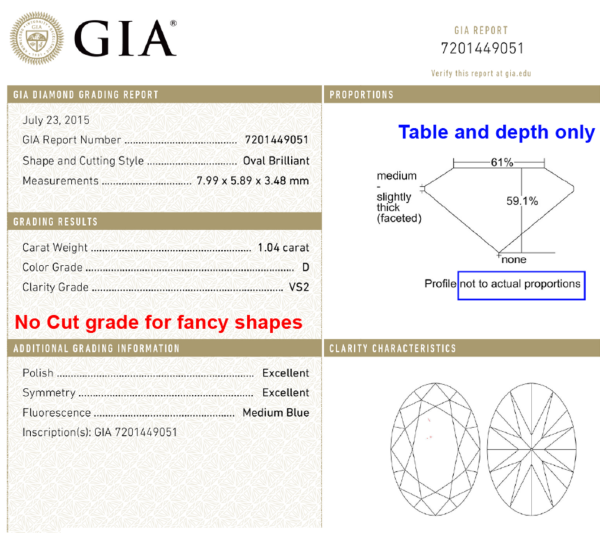
GIA oval cut grade
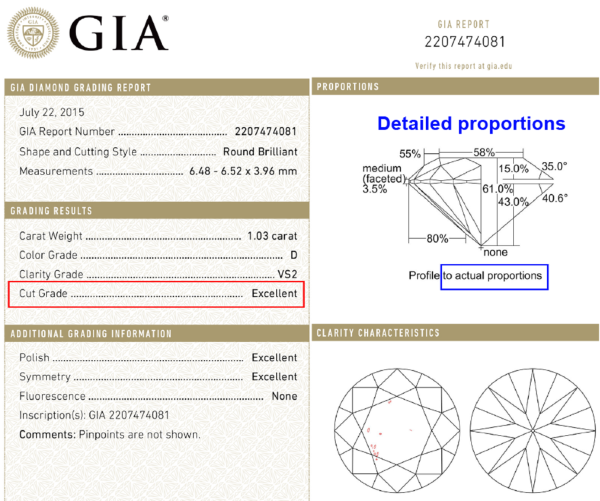
GIA triple excellent XXX diamond
It costs more for GIA to grade and certify a diamond than the cost of cutting the diamond! It sometimes takes months for GIA to complete the grading process. All these issues add to the final cost you pay for a diamond.
An example of duplicity is laser inscription. GIA do free laser inscriptions on diamonds less than 1.00 carat. They charge for inscribing their report number on larger diamonds. The reason is so they can identify a diamond a dealer has resubmitted in the hope of receiving a better grade! For larger than one carat diamonds GIA makes a digital plot or map of inclusions. They use the plot to identify resubmitted diamonds.
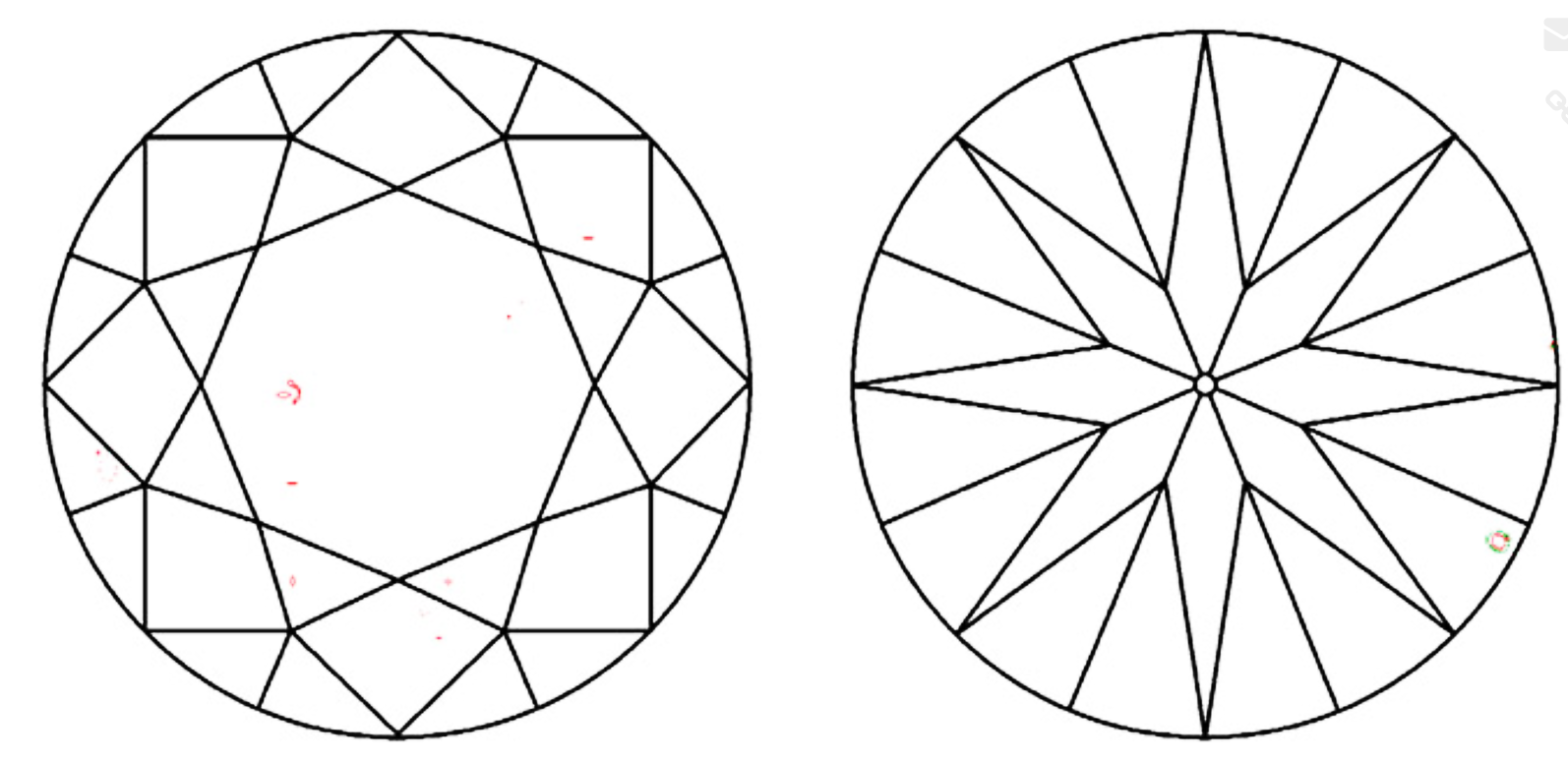
A GIA diamond clarity characteristics plot of inclusions
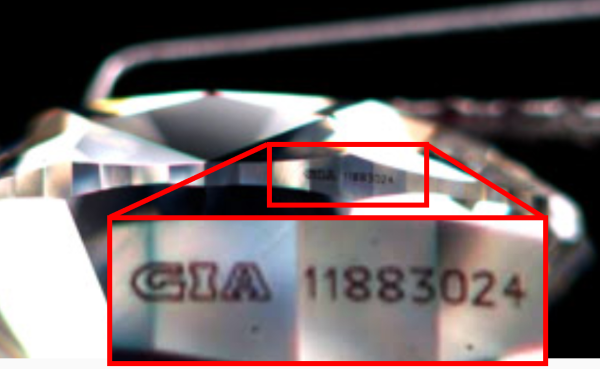
GIA laser inscription
GIA is the best of a variable bunch. In spite of GIA’s issues and shortcomings, GIA is indispensable. Almost all larger Holloway diamonds come with a GIA grading report.
GIA do good work too. Their huge diamond grading and certification profits go back into education and research. When they grade a diamond they use hi-tech gear to see if it is a natural diamond. There are now many man-made synthetic lab-grown diamonds and sneaky treatments.
You can find more information about how to choose diamonds that are truly beautiful not only GIA certified diamonds here.
Heading to the Mediterranean this season? While you soak up the sun, make sure your diamonds are just as radiant when...
When it comes to purchasing an engagement ring, the diamond isn’t the only star of the show. The setting style can...
Investing in gold jewellery is a time-honoured tradition that continues to shine in 2025. Gold has been a reliable...